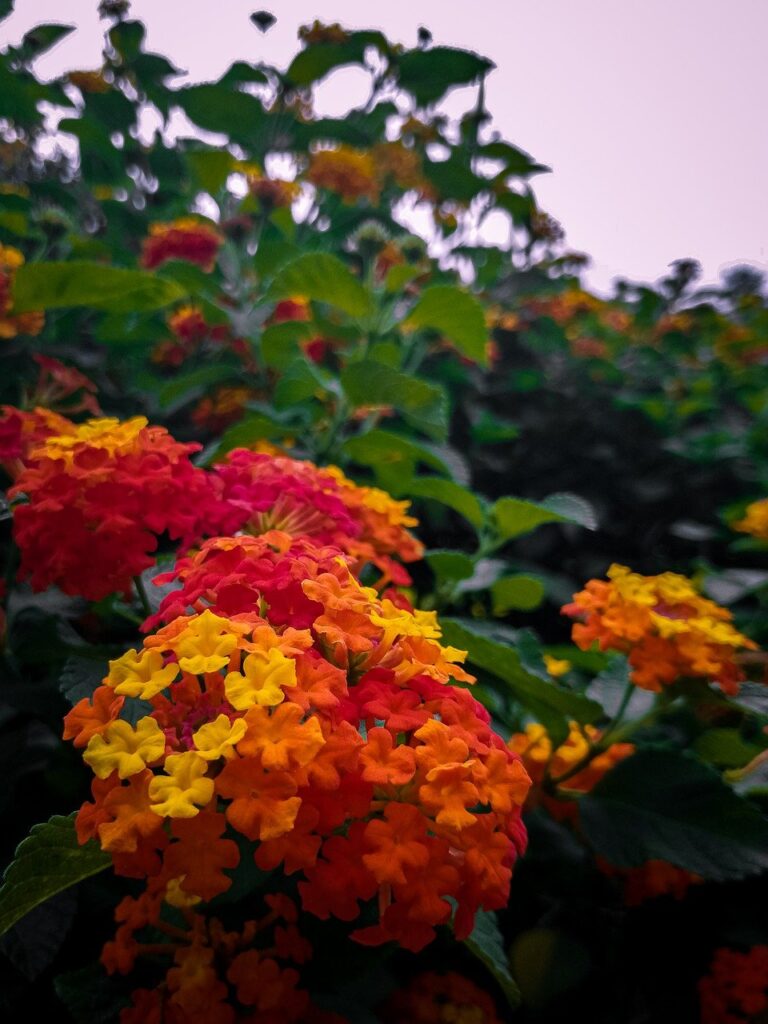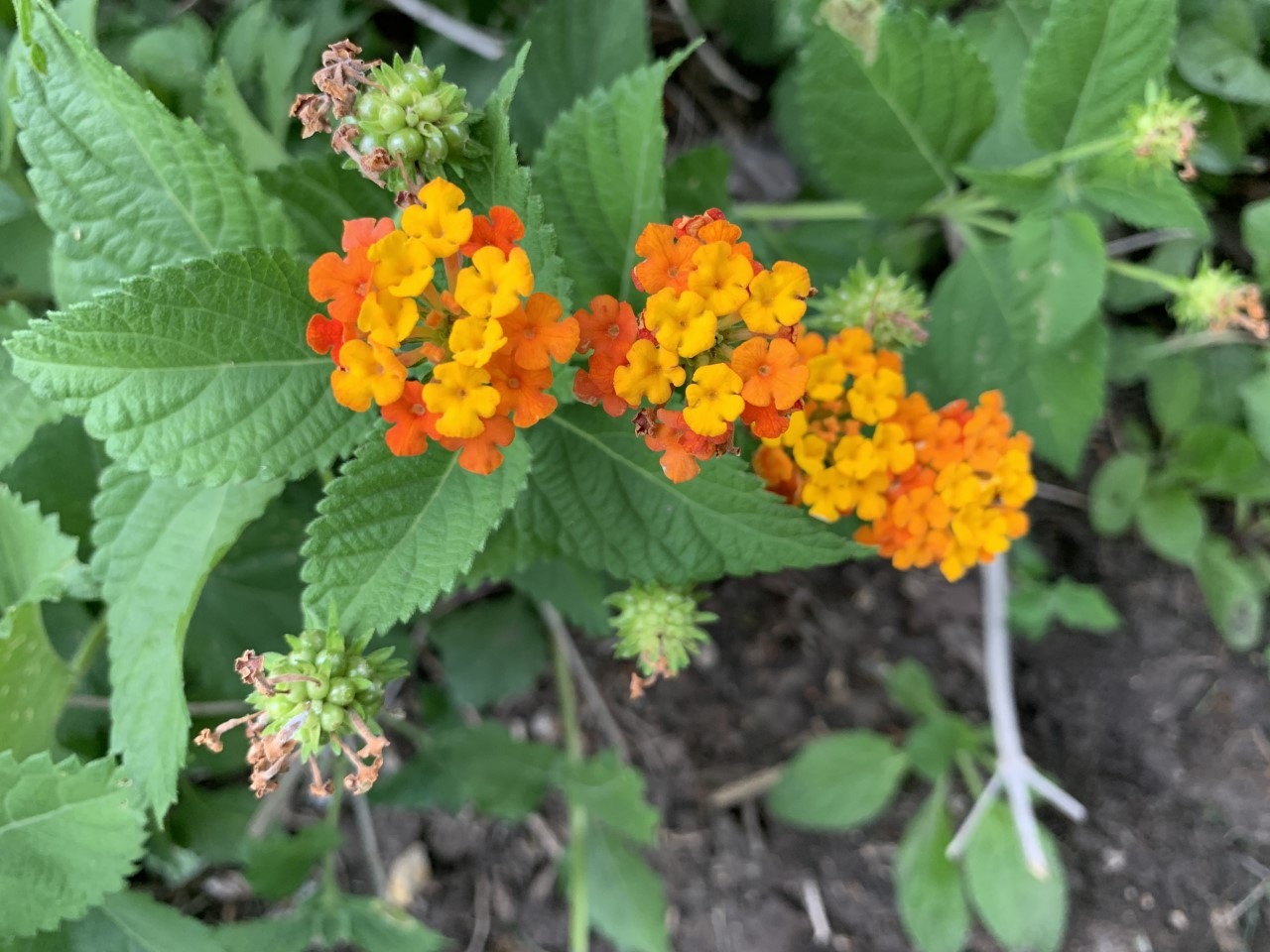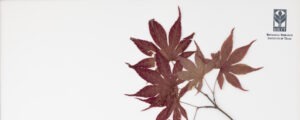Readers of this newsletter are savvy and environmentally aware—most know that invasive plants threaten the environment and native plants support a healthy ecosystem.
But it’s not always easy. You might go to your local garden center looking for a native plant like lantana, take it home and plant it in your garden. You’ve done a good thing, right?
Maybe. Maybe not. How do you know that the variety of lantana you purchased is native lantana?

Here’s a confession: we made this mistake ourselves. In the FWBG | BRIT July Events calendar, we misidentified West Indian lantana (Lantana camara) as native lantana (Lantana urticoides.) We apologize for the error—but we also recognize this as an opportunity for the newsletter staff and our readers to learn more about invasive plants.
Understanding Invasives and the Risks They Pose
Invasive plants are defined as “a species that is nonnative to a particular ecoregion or environment and whose introduction causes or is likely to cause economic or environmental harm or harm to human
health.”
Invasives can arrive in an ecosystem in a variety of ways, says Kim Conrow, immediate past president of the Native Plant Society of Texas. “Some were introduced by government agencies or agriculture departments to solve problems, but then they spread out of control,” says Conrow. King Ranch bluestem, for example, was introduced to Texas in the 1920s and 1930s to combat soil erosion, but it has since spread widely and forced out native plants. “Other invasive species were introduced accidentally, for example in contaminated seeds,” Conrow notes.
Other invasives are known as “escaped plants.” This summons a visual image of plants plotting how to break out of the garden center; in fact, it refers to ornamental plants that have spread beyond gardens and yards into uncultivated areas.
Well-Adapted Plants: Great for the Garden, Bad (Sometimes) for the Ecosystem
Invasive plants are typically quick to reproduce and fast growing; they prosper over many years, thrive under a variety of growing conditions, and quickly establish themselves over a large area. These factors also make the plants desirable to gardeners.
In fact, some ornamental plants may seem to be well-behaved guests to a region for many decades, and then at some point, they explode into the environment. Chinese privet (Ligustrum sinese) is a good local example. “Privet was fine in yards and gardens for eighty years,” says Conrow. “Now it’s taking over.” The Texas Invasive Species Institute describes Chinese privet as an “aggressive and troublesome invasive.”
Some plants are widely known to be invasive. Golden bamboo, for example, is notorious across the state. Stories have circulated of bamboo lifting sidewalks, cracking driveways and even coming up under floorboards; it is nicknamed “damn-boo” by critics who spend years trying to eradicate it.

The invasiveness of other plants is debated by the horticulture community. Nandina or Heavenly Bamboo (Nandina domestica) is considered invasive by Texas Invasives, a partnership of organizations including the Texas Parks and Wildlife Department, the Lady Bird Johnson Wildflower Center and Texas A&M AgriLife Extension. The Texas Invasives database states that nandina has naturalized and invaded habitats; it can displace native species and disrupt plant communities.
Yet the shrub is recommended by many plant experts, who praise its heat-tolerance, drought-tolerance and ornamental appearance. In fact, the Garden grows several varieties of nandina and considers it a valuable addition to the landscape.
Conrow disagrees. “People say that nandina is great because it is so well-adapted to our area,” says Conrow. “But that’s the problem. If it’s not native and it grows easily in your yard, it’s going to grow easily everywhere else.”
That brings us back to lantana. Texas lantana (Lantana urticoides) is a native that thrives in our region and is a favorite of local birds and insects. West Indian lantana (Lantana camara) also thrives in our region. It “easily invades disturbed ecosystems and often forms in dense thickets. It can quickly dominate the understory in forests and suppress the growth of native plants, turning the forest communities into shrub-lands,” according to the Texas Invasive Species Institute. It has become a serious pest in Florida citrus groves. It poses a danger to livestock animals such as cattle and sheep and wild animals because the leaves and unripened fruit are poisonous.
In this newsletter, we have recommended lantana as a source of garden color in the summer and a magnet for pollinators such as butterflies. So how do you know you’re getting the right lantana?
Becoming a Smart Plant Shopper
It’s not easy and it takes effort, says Conrow. Nurseries and garden centers do not always label plants as native versus non-native, and you can frequently find invasive plants for sale.
| Online Databases of Invasive Plants Texas Invasives Database Texas Invasive Species Institute Trees of Texas: Aggressive Invaders Online Databases and Lists of Native Plants Native Plant Database Native Plant Society: Plant Lists by Region Texas SmartScape Plants (Indicates when plants are native.) Other Native Plant Resources Native Plant Society of Texas Texan by Nature: Native Plants |
One strategy is to shop at nurseries that work with the Native Plant Society of Texas in their NICE (Natives Improve & Conserve Environments) Native Plant Partners program. The Society maintains a list of native plant partner nurseries across Texas.
Another tip is to do your homework. “If you’re interested in a plant, look it up online,” says Conrow. We’ve listed several resources to identify both native and invasive plants. Bring to the garden center the name of the plant variety you want, and be as specific as possible.
One thing to consider while conducting your research is to consider sterile varieties of ornamental plants. Seedless varieties of plants are intended to limit their spread. Many native plant organizations discourage the use of sterile or seedless varieties and argue that some plants sold as sterile turned out, in time, to reproduce. This is a complex issue, and we encourage you to read up on the topic and perhaps discuss it with the Master Gardeners on call with your local Texas AgriLife Extension Office. (For Tarrant County, call 817-884-1943 or 817-884-1944 Mondays through Fridays between 8:30 am and 4:30 pm. Information on other counties is available online.)
If a plant isn’t clearly labeled, ask the nursery staff. Many garden centers have knowledgeable and well-trained staff who know their plants. Others do not, and this is just a face of the market.
If you hit a wall at the nursery, consider adding one of the many plant identification apps to your phone. These apps allow you to take a photo of the plant in question and learn more about it. Different apps work in different ways, and some specialize in certain types of plants, so read up on your options.
Another suggestion is to ask members of the Native Plant Society. The different chapters of the organization have active Facebook groups. Conrow encouraged individuals to join the group for their region and post a photo of the plant they are considering. Members will be quick to offer identification and advice. You can also call your county extension office for help identifying plants.
Native plants offer many benefits to gardeners. They are typically low maintenance and adapted to the soil conditions of our region. They can tolerate the heat and require less water. They generally are less prone to pests and diseases and so require fewer pesticides. They provide habitats for local wildlife and food for birds, insects, and animals. Choosing these plants for your garden is a powerful way that you can help protect our environment.
“It’s critical that we do everything we can to help nature. We are part of nature,” says Conrow.






